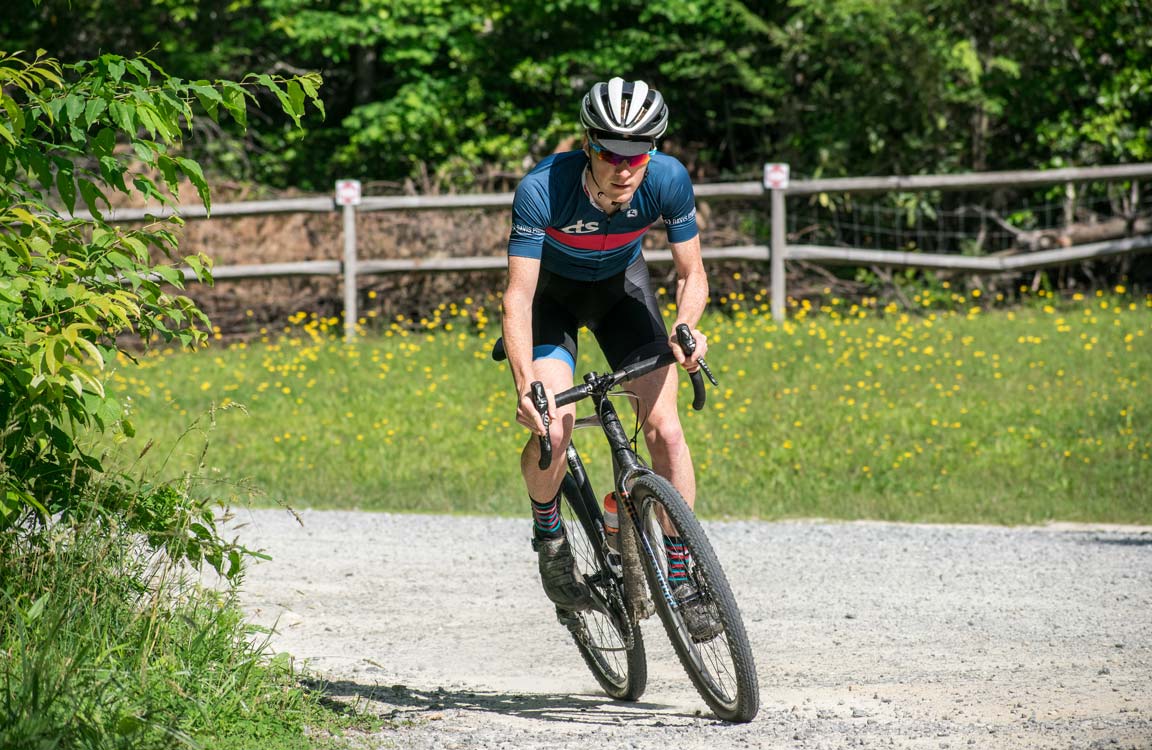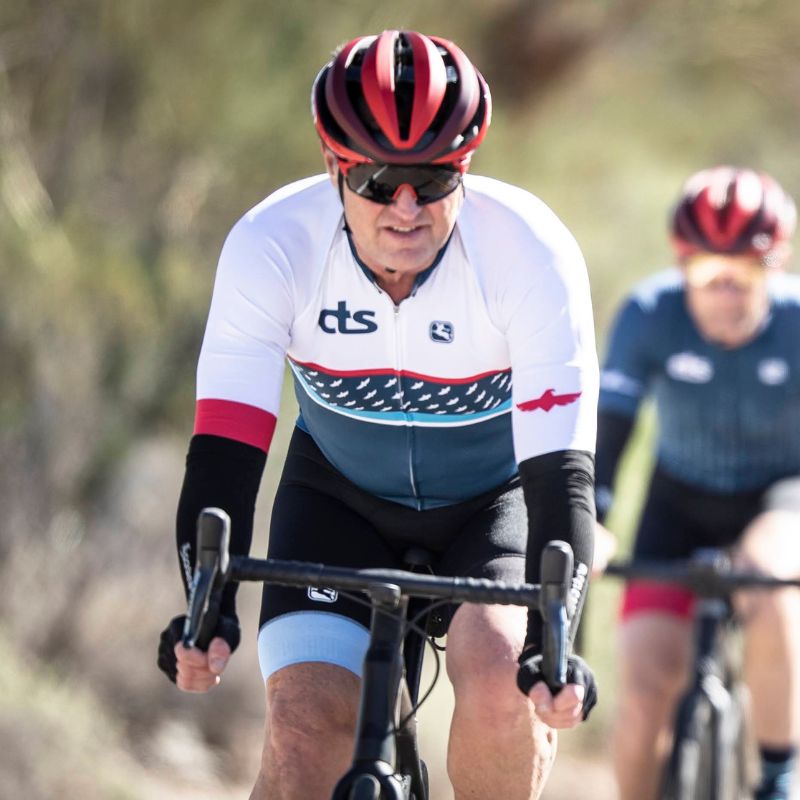
Training and Mental Preparation for Gravel Races
By Chris Carmichael
CTS Founder and Chief Endurance Officer
Gravel racing is a great combination of personal challenge, tough competition, inclusive community, and long-range fun. Long endurance events require some specific mental and physical preparations. If you have a gravel race in your future, here are eight pieces of advice you should take to heart.
Embrace the suck
Like any ultraendurance event, long gravel races are difficult. They’re supposed to be. To be successful you have to embrace the fact you will be uncomfortable – in training and during the race. You don’t have to suffer on purpose (you don’t get extra points for self-flagellation), but you also shouldn’t try to shy away from discomfort.
This goes for equipment and bike fit, too. Some athletes spend inordinate time trying to essentially use gear and fit to smooth out the gravel roads. If you’re on the bike for 6, 12, or 15 hours something is going to hurt, no matter what. Embrace that fact and figure out how you’re going to continue riding and having fun when your hands or butt or shoulders don’t feel perfect.
From a bike fit standpoint, comfort is important, but so is control. You need to feel confident going downhill at higher speeds, and handle corners without slowing to a crawl. In my view, you also have to make sure you can ride effectively with your hands in the drops, on the brake hoods, and on the bar tops (many people can only do the last two).
Feel Stronger in 6 Weeks — No Matter Your Age
Climbs feel steeper? Recovery slower?
You’re not done getting faster — you just need a smarter plan.
The 6-Week Masters Power Build Coaching Program is designed for cyclists 50+ who want to boost power, recover faster, and ride stronger — all with expert 1:1 coaching.
- Personalized 6-Week Training Plan
- 1:1 Coaching + TrainingPeaks Premium
- Mobility & Strength Bonus Guides
💪 Guarantee: Stronger or free.
Start your 6-week journey for $149Never count yourself out
Gravel races are long, so long that you have time to suffer significant setbacks and still reach your goals. You have no idea what’s happening ahead or behind you, nor can you control those things.
Three-time DK200 and DKXL champion Rebecca Rusch once gave CTS Athletes a great piece of advice the night before the race. The gist of it was: “There will be a time tomorrow when you feel terrible and that you can’t go on, and there will be a time when you feel on top of the world. Just remember that neither of them will last long.” When you feel good, enjoy it. When you don’t, keep working the problem and never give up. And understand that everyone else will have their ups and downs as well.
Train for the worst
In some areas, gravel roads in Kansas turn to mud with the consistency of peanut butter when it rains. In Steamboat Springs, Colorado, a sudden thunderstorm can drop temperatures 30 degrees in a matter of minutes. You may not be able to mimic these conditions wherever you are training, but don’t shy away from training in the rain, go out on the windy day, and take the harder route with the worse surface sometimes.
Build a strong team
One of the hallmarks of gravel racing is that aid stations are few and far between, and that there’s no assistance allowed anywhere outside the aid stations. A few races have flirted with neutral support, but it seems unlikely to gain traction. When you do roll in to aid stations, it is important to have a crew you trust and that knows how to help you. You may not make great decisions after 10 hours rattling down gravel roads.
Give your crew clear instructions before the race, but don’t make it complicated. It doesn’t need to be complicated. You just need to make sure – and have people with you who can help make sure – you leave the aid station with the food, fluids, clothing, and gear you need for the next long leg. If you used tubes or CO2 canisters, make sure to restock. If you’re headed into sunset, pick up your lights.
Go in as fit as possible
This seems like a no-brainer, but the point is that fitness solves a lot of problems. The more fit you are, the better you can handle mistakes or unforeseen conditions. When training for ultraendurance races and gravel races, some people get caught up in the minutia and neglect the fundamentals. Spend as much time as you can on the bike, focus on structured interval workouts during your shorter weekday rides and longer endurance rides when you can. There’s no magical distance you have to cover in a single ride to determine you’re ready. Those ultra-long training rides are more useful for experiential learning than they are for improving fitness. They’re good to do, but if you can’t fit one into your training, don’t let that dent your confidence.
► Free Cycling Training Assessment Quiz
Take our free 2-minute quiz to discover how effective your training is and get recommendations for how you can improve.
Roll with whatever comes
The longer the event, the less likely everything will go to plan. Things don’t go exactly like you want them to in 60-minute criteriums, let along 12-hour gravel races. Your perfectly portioned nutrition strategy will go sideways when a bar or gel bounces out of your pocket or you lose a water bottle. Or you might just not have any desire to eat that special PB&J at mile 150. The weather may turn on you, your bike may conspire against you, or maybe you’ll get lost for a bit.
Learn to be flexible and quick to adapt. Don’t hang on too tightly to a plan that is going off the rails. Having great fitness, a supportive crew, and plenty of grit will get you through most problems you’ll encounter.
Learn to love the process
Staying engaged in training can be difficult when your event is a year away, or more. The outcome – whether it’s a buckle or the top step of the podium – is only partly under your control. In the best-case scenario, it’s not the outcomes that keep you engaged in your sport. Rather, your love for the sport and the process of training is ideally what sustains your engagement, and the events give you something to direct your training toward.
Be kind to yourself
One of the things I enjoyed about the Unbound Gravel was the solitude in the second half of the race. By that time, with more than 100 miles already behind you, the pack is so spread out that you may not be able to see anyone ahead or behind you. It’s just you, the rolling horizon, and the crunch of gravel under your tires. That solitude also gives you a lot of time to get inside your own head. The same thing happens to athletes in training. We can be our worst critics and when you are exhausted and things have started going sideways, it is very easy to be extremely hard on yourself.
It is important to recognize those negative thoughts and counter them with positive statements. Negative thoughts will happen, that’s natural. You get to decide what to do about them. Don’t let negativity gain a foothold in your mind, or it will grow and multiply.
Success in gravel racing, and this extends to ultrendurance mountain bike and road cycling events, depends less on your physical power output or even aerobic endurance, and more on what you have between your ears. Can you make good decisions about pacing, nutrition, hydration, navigation, and equipment? Can you manage your eating and drinking over 12 hours without upsetting your stomach? Can you keep the negative thoughts at bay? Do you have the fortitude to roll with the punches, adapt in the face of adversity, and keep moving forward? If the answer is yes, then you’ll roll back into town with a smile on your very dirty face.
► FREE Mini-Course: Learn How to Maximize Your Limited Training Time
Learn step-by-step how to overcome limited training time and get faster. Walk away with a personalized plan to increase your performance.
"*" indicates required fields


Comments 1
I’ve done RAIN (ride across Indiana) 10 times which is a 160 mile one day ride. Did DK half pint and wow, that was as much or more of an effort. Lessons I took away were certainly comfort on the bike, but also find gravel, any gravel, and get used to the difference from the road. Also much more attention to upper body strength as the pounding on the gravel is so much different. And for DK love heat and humidity, knowing you won’t carry too much water!